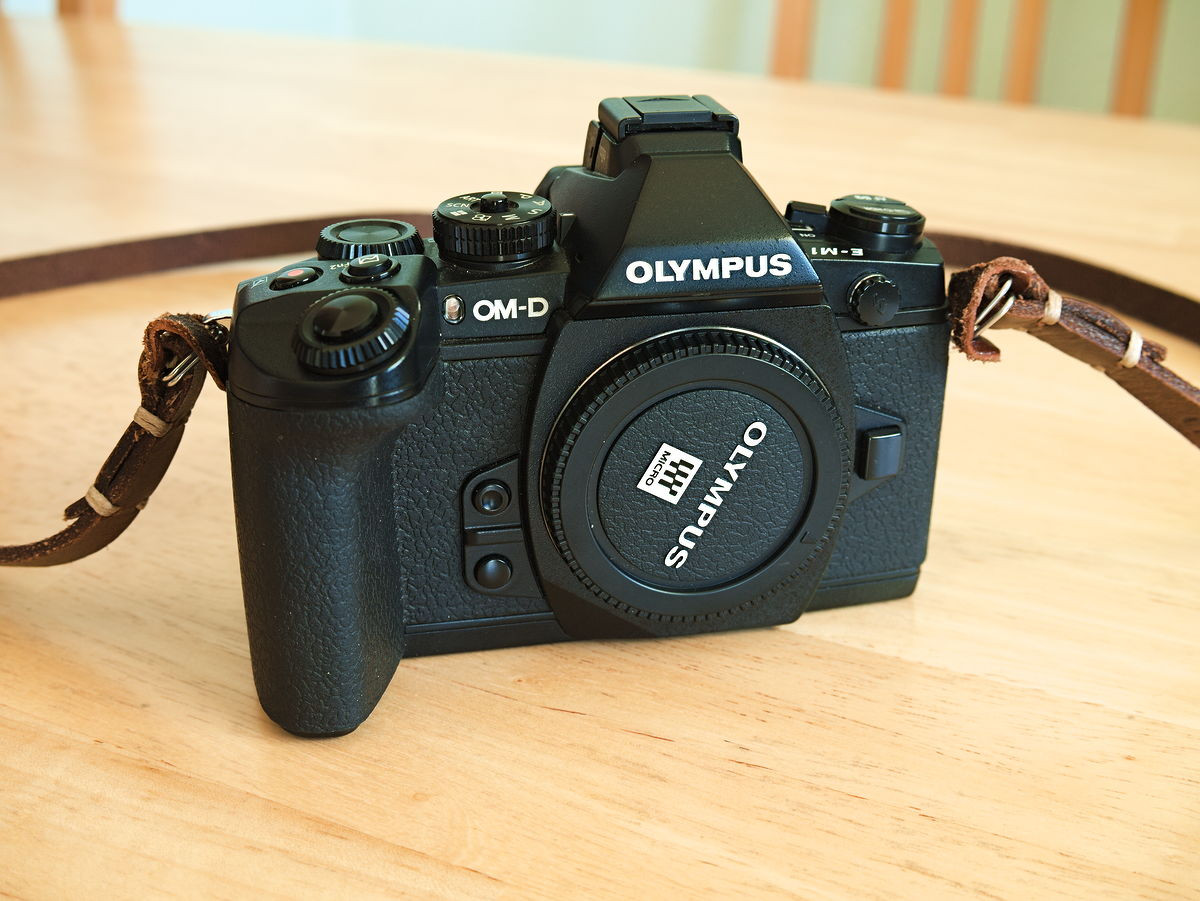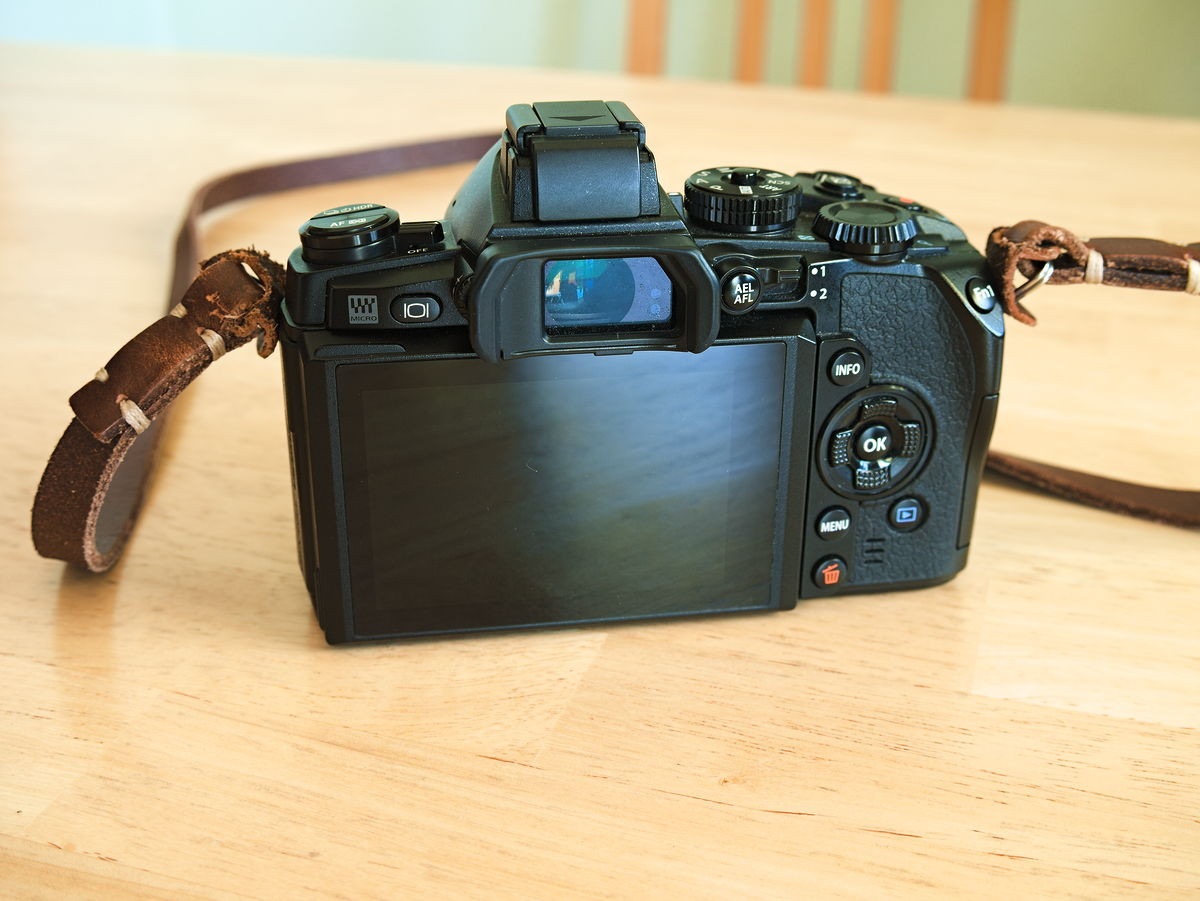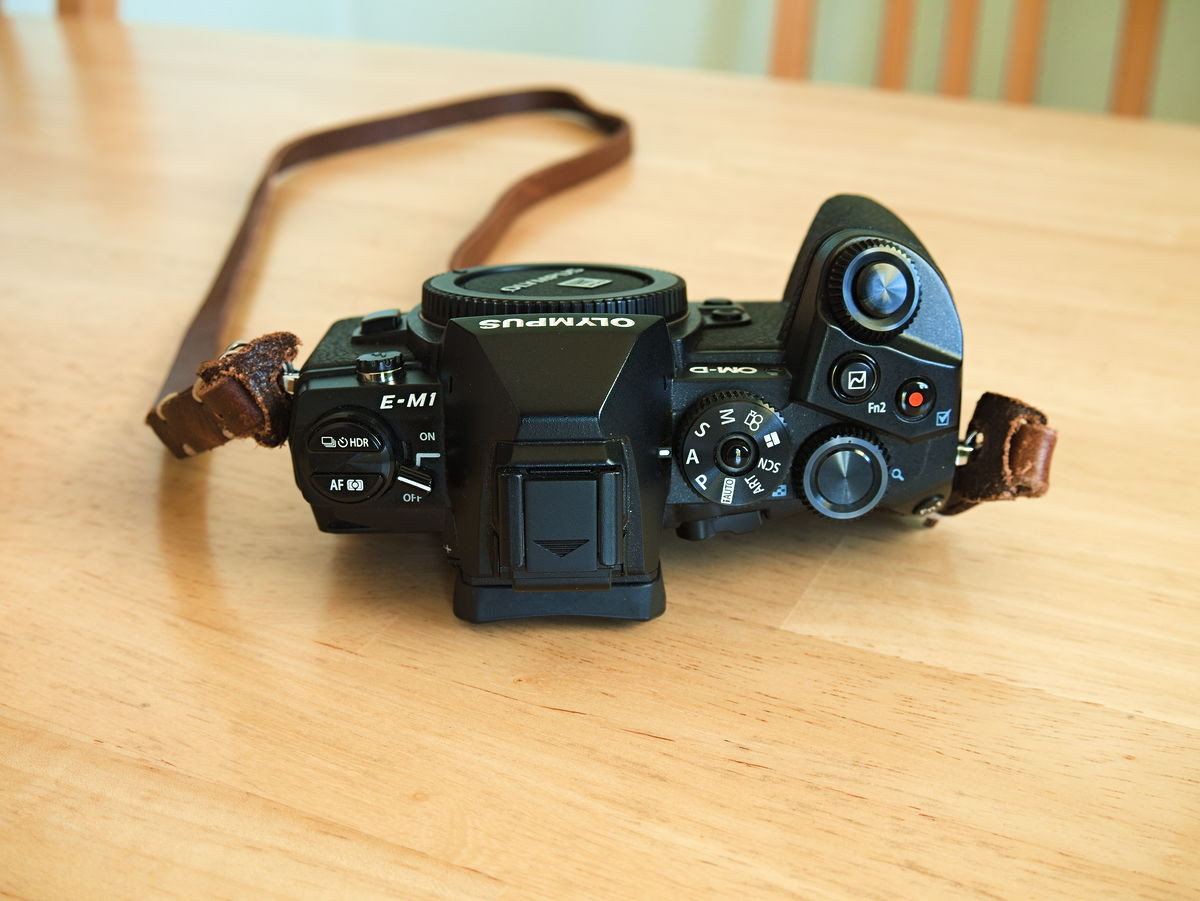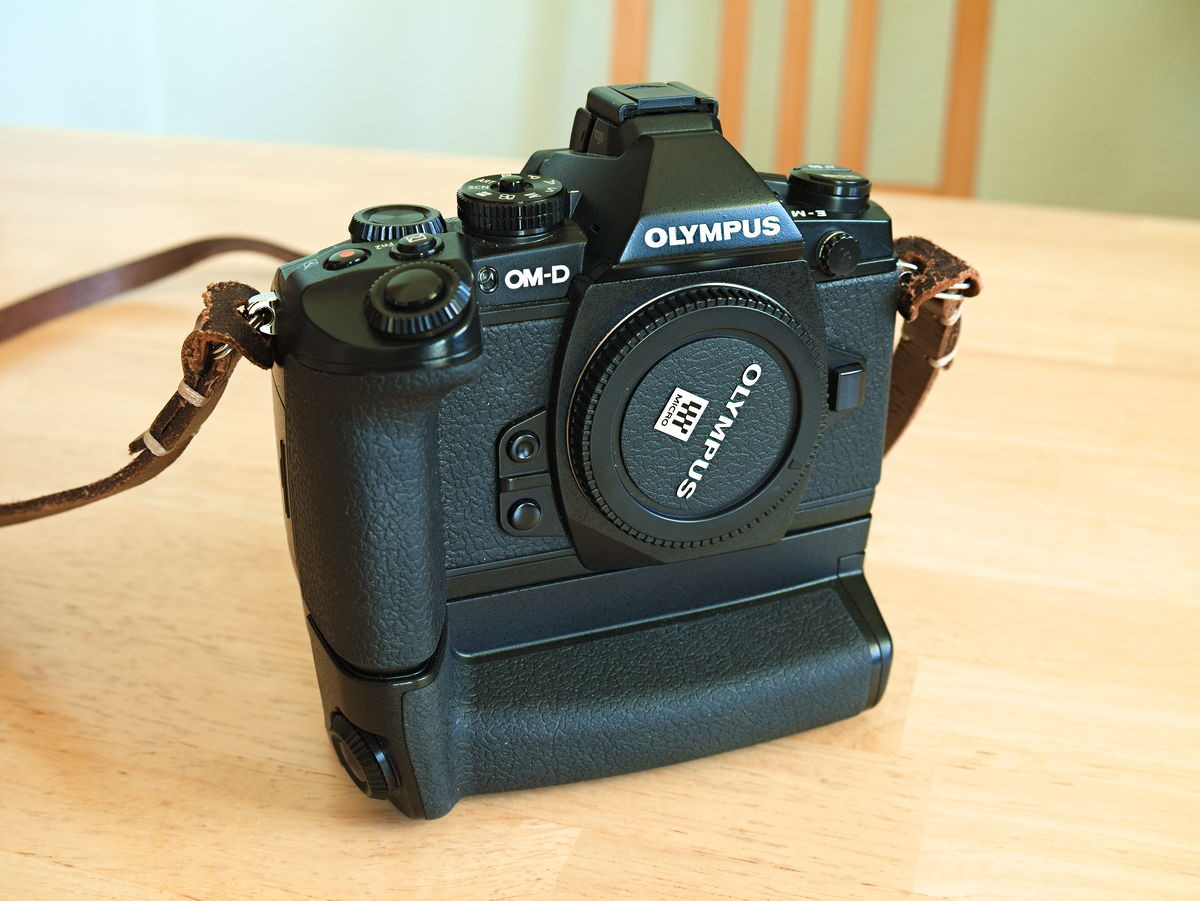When I talk about photography and my photos, people often ask me, what camera I use and prefer. When I tell them, it is an Olympus camera called OM-D E-M1, they are wondering, why not a Canon or Nikon DSLR?
So first I have to explain, that I am not using DSLR (=Digital Single Lens Reflection) cameras anymore, because I don’t need a mirror in a camera. Many,regarding photography, less experienced people think, the mirror in a DSLR enhances picture quality in some way. In reality a mirror is just reflecting the light from the lens into the optical viewfinder (=OVF) of a DSLR and is in no way related to image quality.
I prefer DSLM (=Digital Single Lens Mirrorless) cameras, which are mirrorless system (=interchangeable lens) cameras. These cameras have an electronic viewfinder (=EVF) as a replacement for the old OVF. Again, the type of viewfinder stands in no relation to the image quality of a camera. It rather defines the level of control over the image taking process, as explained further below. DSLM cameras and DSLR cameras are supposed to have a similar professional level of image quality. Of course the image quality depends on many more factors, that I won’t discuss in this short blog entry.
Through an EVF you see the photo as a live view picture. The image sensor is responsible to gather the light that comes through the lens. It then converts the light waves into an electronic signal. With an EVF you already see the photo before you take it. You can control the white balance, exposure or you have even more controls directly on your display, like live histogram, a level gauge or indicators for highlight/shadow clipping. Again, this is, before you take the photo. I have much more control over the image taking process, hence the end result is much more exactly, what I wanted. If it is very dark, an EVF can even brighten up the live view image in the viewfinder. You can still see, what you want to photograph. In an OVF you have no chance to see anything at all because it stays black in darkness.
In an OVF you cannot see the results of the changes of your settings, like exposure changes or white balance, before you take the photo. With a DSLR camera I often ended up with try and error until the result was fine. That was a much more complicated way than nowadays.
A mirror in a DSLR has some more disadvantages. It can mechanically fail and induce mirror shock through mirror slapping, which produces slightly blurred images. Everytime you take a picture the mirror has to go up, because it stands in the way between lens and image sensor. After you have taken the photo, it goes down again. Additionally DSLR cameras are much bigger with a build in mirror. That leads to bigger lenses as well.
If I take my Olympus OM-D E-M1 as an example, it is in many aspects more powerful than a professional DSLR. It is very fast, has fantastic ergonomics and button layout and feels like a glove in your hands. But the most important is, without a mirror it is more robust and SMALLER. Even the lenses are much smaller for a DSLM than for a DSLR. Isn’t it much more fun to take photos without the burden of heavy DSLR cameras and lenses?
So, if you have never heard about DSLM cameras, may be this article encourages you to look out for a DSLM camera as your next camera.. It is the new professional or enthusiast way of taking photos now and even more in the future.
And just to show you a beautiful example of a DSLM, I have added photos of my Olympus OM-D E-M1 (without lens), that has nowadays an even faster and more powerful successor E-M1 Mark II. The E-M1 has a Micro Four Thirds (=M43 or M4/3) mount but is as a professional camera not the smallest of its kind. You can use all Micro Four Third lenses from Olympus, Panasonic/Leica, Voigtländer, Samyang and many more on that camera. The E-M1 is a beauty of a cam. It makes taking images much more joyful.
Google Translate
当我谈论摄影和我的照片时,人们经常问我,我喜欢用什么相机。当我告诉他们,这是一个叫做OM-D E-M1的奥林巴斯相机,他们想知道为什么不是佳能或尼康DSLR?
所以首先我必须解释,我不再使用DSLR(=数字单镜头反射)相机,因为我不需要在相机中的镜子。许多关于摄影缺乏经验的人认为,DSLR中的镜子在某种程度上提高了画质。实际上,镜子只是将镜头中的光线反射到数码单反相机的光学取景器(= OVF)中,而与图像质量无关。
我更喜欢DSLM(=数字单镜头反光镜)相机,它是无反光镜系统(=可更换镜头)相机。这些相机有一个电子取景器(= EVF)作为旧OVF的替代品。同样,取景器的类型与摄像机的图像质量无关。它定义了对图像获取过程的控制级别,如下面进一步解释的那样。 DSLM相机和数码单反相机应该具有类似的图像质量的专业水平。当然,图像质量取决于更多的因素,我不会在这个简短的博客条目中讨论。
通过EVF,您可以将照片看作实时查看图片。图像传感器负责收集透过镜头的光线。然后它将光波转换成电子信号。使用EVF之前,您已经看过照片了。您可以控制白平衡,曝光或直接在显示屏上进行更多控制,例如直方图,水平仪或用于高光/阴影裁剪的指示器。再次,这是,在你拍照之前。我对图像采集过程有了更多的控制,因此最终结果更准确,我想要的。如果太暗,EVF甚至可以使取景器中的实时取景图像变亮。你仍然可以看到,你想拍摄什么。在OVF中,你根本没有机会看到任何东西,因为它在黑暗中保持黑色。
在OVF中,在拍摄照片之前,您无法看到设置更改的结果,如曝光更改或白平衡。用数码单反相机,我经常结束了尝试和错误,直到结果是好的。这比现在复杂得多。
数码单镜反光相机有一些缺点。它可以通过镜面拍打机械地失效并引起镜面震动,从而产生稍微模糊的图像。每次拍照时镜子都要上去,因为镜子和图像传感器之间是隔开的。拍完照片后,再次下降。另外,数码单反相机的镜头更大。这导致更大的镜头。
如果我以奥林巴斯OM-D E-M1为例,它在许多方面比专业数码单反相机更强大。它速度非常快,具有出色的人体工程学和按钮布局,感觉就像手中的一只手套。但最重要的是,没有镜子,它更强大,更小。即使DSLM的镜头比DSLR小得多。没有沉重的数码单反相机和镜头的负担,拍照不是很有趣吗?
所以,如果你从来没有听说过DSLM摄像机,可能是这篇文章鼓励你把DSLM摄像机作为你的下一个摄像机。这是现在拍摄照片的新的专业或爱好者的方式,在未来甚至更多。
只是为了向您展示DSLM的一个美丽的例子,我添加了奥林巴斯OM-D E-M1(没有镜头)的照片,现在有了更快,更强大的后继E-M1 Mark II。 E-M1拥有微型四分之三(= M43或M4 / 3)安装座,但是作为专业相机并非同类产品中最小的。您可以使用奥林巴斯,松下/莱卡,Voigtländer,三洋等所有微型四分之三镜头。 E-M1是一个凸轮的美丽。它使拍照更加快乐。




